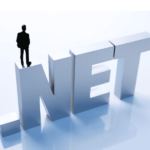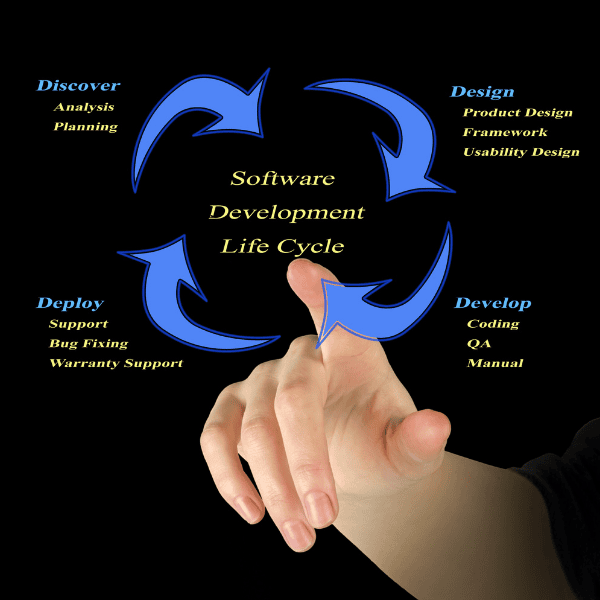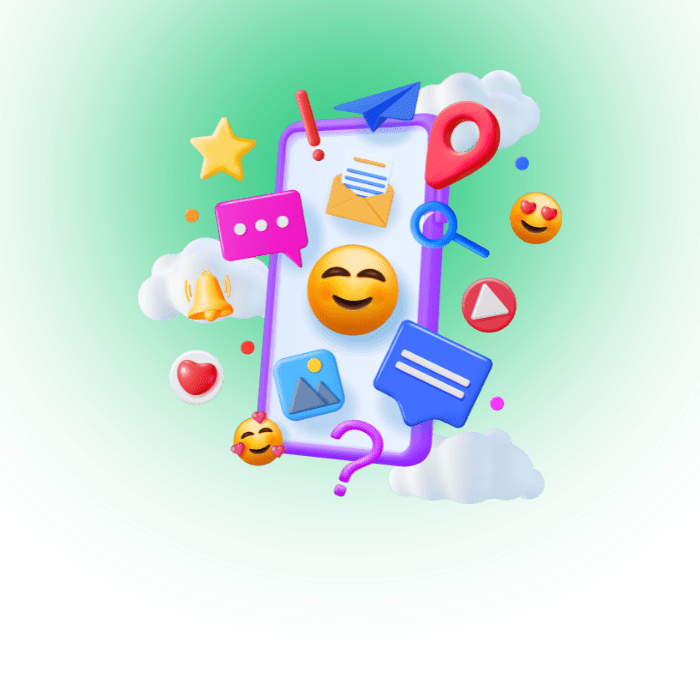Learning Management Systems (LMS) have emerged as the keystone in the fast-changing landscape of education and corporate training, offering the framework and assistance required for successful learning experiences. These online learning environments are the foundation of contemporary education, allowing students, teachers, and administrators to easily navigate the enormous world of eLearning. But what characteristics genuinely distinguish a top-notch LMS from the competition? In this in-depth investigation, we will go into the domain of Must-Have LMS Functions, examine the Key LMS Characteristics, and unearth the Essential Learning Management System Features.
User-Friendly Interface: The Gateway to Learning
Navigability and Intuitiveness
Imagine entering a library with thousands of books, each promising to teach you something and lead you to enlightenment. Imagine attempting to find your way through this goldmine of information without any direction or structure. That is precisely the problem that learners and educators face when using a poorly designed LMS. Navigation and intuitiveness are the key components of a user-friendly interface.
No matter their age or level of technical expertise, learners should have no trouble navigating the LMS. It should have a friendly atmosphere rather than a confusing layout. Navigational components must to be clearly organized and explicit. Users should be able to quickly predict where buttons, menus, and links will take them.
Learners should encounter a stimulating atmosphere when they enter the virtual classroom, not one that frustrates and perplexes them. In this regard, the user-friendly design serves as more than just a feature; it also serves as a springboard for fruitful educational endeavors.
Customization Capabilities
Particularly given the diversity of the educational world, one size rarely fits all. Institutions of higher learning, businesses, and organizations all have certain requirements and identities. Because of this, the importance of customizing possibilities for LMSs cannot be emphasized.
A good LMS should provide a number of customization choices. The platform should change to reflect the distinctive learning objectives and brand identity of your organization, from the general look and feel to the specific features and functionalities. A platform that connects with your students and reflects your unique ethos should feel like an extension of your university.
Imagine it as a well-made garment that fits you like a second skin. With customization, you may mold the LMS to exactly your requirements, ensuring that it functions as a seamless extension of your business.
Comprehensive Content Management
Multi-Format Support
Text, video, audio, interactive simulations, and other media are all used in education today. Multi-format compatibility is therefore one of the Essential Elements of a Learning Management System. Your LMS should be a master of material who can easily handle a variety of forms.
Your LMS should be your go-to resource for everything, including video lectures, document uploads, interactive quizzes, and 3D simulations. It needs to guarantee that your material gets to your audience in the manner that works greatest for them. After all, flexibility and accommodating different learning styles are key components of modern education.
Version Control and Content Collaboration
Education is a dynamic process of growth and change; it is not static. Your material should advance together with new understanding and instructional techniques. A reliable content management system is therefore essential.
You can monitor changes to your material over time by using version control. Similar to an audit trail, it makes sure you can always go back to an earlier version if necessary. When numerous authors or subject-matter experts are working together to create material, this is essential.
Think of it as a group mural where artists collaborate to produce a masterpiece. This collaboration ought to be facilitated by the LMS, ensuring that each stroke benefits the finished product.
The LMS should act as your dependable library in this vast realm of content management, gathering, storing, and making content accessible to both learners and educators.
Robust Assessment and Analytics
Adaptive Testing
In a typical classroom, everyone frequently moves along at the same speed. Every student, however, is different, with their own strengths and places where they require extra assistance. Here, one of the essential LMS components—Adaptive Testing—comes into play.
Assessments that use adaptive testing are tailored to specific students. It evaluates a student’s comprehension level and adjusts the questions’ level of difficulty accordingly. When a student is doing well, the questions get harder. The questions become easier to answer if they’re having trouble. This guarantees that each learner advances at their ideal rate, resulting in more successful learning results.
Adaptive testing is comparable to a personal teacher who knows your areas of strength and weakness and leads you down the right route in terms of learning. Personalized growth is important, not simply assessments.
In-Depth Analytics
Information is a treasure trove waiting to be discovered in the age of big data. Similar to expert data miners, LMS platforms with in-depth analytics may extract useful information to enhance the learning process.
These analytics give teachers a comprehensive picture of how students are interacting with the material. Based on engagement patterns, they can determine which resources are the most helpful, which subjects are confusing students, and even forecast possible dropouts. With the use of data-driven decision-making, educators can modify curricula and resources to improve learning outcomes.
It is comparable to owning a telescope that allows you to see the furthest regions of your learning galaxy. In-depth analytics are more than simply numbers; they are the pinnacles of your academic ascent.
Seamless Integration and Compatibility
Third-party Integrations
No platform functions in isolation in the digital age. The many resources and platforms in your educational ecosystem should be connected through your LMS. Consider it a digital Swiss Army knife that can easily be combined with other necessary programs and services.
Your LMS should be the key center that conducts the symphony of your educational technology stack, orchestrating everything from video conferencing tools for live virtual classrooms to Customer Relationship Management (CRM) software for tracking student progress and engagement.
The objective is to make sure that both students and teachers have a seamless and integrated experience. No more switching between several tools thanks to seamless integration; everything functions in unison.
Mobile Responsiveness
Since the world is mobile, so should education. Mobile responsiveness is now a requirement, not a luxury to be thought about. Students should be able to use their smartphones and tablets to access courses and resources with the same simplicity and functionality as desktop computers.
Because of mobile responsiveness, learning is not restricted to a specific area. Mobile compatibility enables users to interact with material according to their preferences, whether they are students checking lecture notes during their commute or workers taking a micro course during their lunch break.
It’s like having your complete library with you at all times, ready for exploration. The key to learning on the fly is mobile responsiveness.
Effective Communication Tools
Discussion Boards and Forums
Learning is a collaborative process. It flourishes in the supportive environment of cooperation and discourse. Discussion boards and forums are the online version of the academic coffee shops where ideas are developed and exchanged.
These tools make it possible for teachers and students to have in-depth discussions, ask questions, share views, and work together on projects. They eliminate obstacles caused by physical separation and promote a sense of community and connection.
Discussion boards and forums serve as links between students and teachers in the field of effective communication, fostering a thriving ecosystem of information sharing.
Real-time Chat and Notifications
Real-time communication skills are essential in a world where information travels at the speed of light. The digital messengers that keep students and instructors engaged and informed are real-time chat and notifications.
Consider asking a question in the middle of a live online lecture. You can ask it right away and get a prompt answer using real-time chat. So that you never miss a beat, notifications make sure that crucial updates and announcements arrive right away.
With the help of these tools, the online learning environment is transformed into a lively, interactive setting where communication is fluid.
Scalability and Accessibility
Scalability for Growth
Your LMS should expand as your company, institution, or organization does. Your platform must be scalable in order to successfully support an increasing number of students, courses, and resources.
Imagine it as the construction of a skyscraper with a growing number of levels. Your LMS needs to be the base for this expansion, offering a dependable and sturdy infrastructure. Scalability guarantees that your LMS can manage the challenge, whether you’re onboarding a small number of new students or extending your corporate training program internationally.
Accessibility for All
No one should be left out of the educational process. Accessibility for All is a moral requirement, not just a tick to tick. Your LMS should adhere to accessibility guidelines so that people with impairments can participate completely in the learning process.
This entails offering content in alternative formats, assuring screen reader compatibility, and creating interfaces that people with motor disabilities can use. The goal of accessibility is to foster an atmosphere where every learner may succeed, not only to adhere to legal requirements.
Security Measures: Safeguarding Data and Privacy
Data Encryption
Protecting data is crucial in a world where information is valued as highly as gold. Sensitive information is protected from prying eyes via data encryption, which acts as a fortress. To guarantee that data is secure and private, your LMS should use reliable encryption technologies.
Data encryption is the digital safe that protects your educational assets, whether they be student records, test results, or exclusive course materials. It is an essential component of trust in the digital era and not merely a feature.
Role-based Permissions
Not every user should have complete access to your LMS. You can specify who is allowed to do what using role-based permissions. This guarantees that data is kept secure and that only authorized individuals are able to make important changes.
Imagine it as a hierarchy, with different users having varying levels of access. Administrators have total authority, instructors have access to particular courses, and users can view their own progress. Your LMS’s gatekeepers, role-based permissions, make sure that only authorized users have access to the kingdom’s resources.
Continuous Updates and Support
Regular Updates
Technology moves quickly, and staying stationary risks getting left behind. Your LMS needs to adapt to the changing environment. You will always have access to the newest features, security upgrades, and bug fixes if you receive regular updates.
These upgrades provide your LMS with new capabilities and keep it at the cutting edge of technology. They are its lifeblood. It’s comparable to hiring a committed group of architects to upgrade and grow your educational infrastructure.
Responsive Customer Support
A helping hand is vital in times of need. When you run into problems or require assistance, responsive customer support should be available. A committed support team can spare you a great deal of hassle, whether it be a technical issue, a feature inquiry, or help with onboarding.
Think of them as your virtual sherpas, leading you through the high points and low points of the eLearning terrain. Customer service that responds quickly turns problems into chances for development.
Cost-Effective Pricing Models
Transparent Pricing
Budgets for education are frequently constrained, and each expense must be justified. An LMS ought to be an investment in the future of education rather than a financial burden. With transparent pricing, there are no surprises or hidden fees; you know exactly what you’re getting for your money.
Think about things like user licenses, storage space, and added functionality when analyzing price models. Make sure the pricing is in line with your budget and offers a good return on your investment.
Value for Investment
In the end, you should consider the value you obtain as well as the cost. Does your LMS provide a good return on investment? Does it enable your students and teachers to succeed? Does it offer the features and tools required to produce a vibrant and productive learning environment?
In the realm of cost-effectiveness, it’s about finding the right balance between affordability and the capabilities you require. A cost-effective LMS is one that enriches the learning experience without breaking the bank.
Conclusion
Learning has expanded beyond the boundaries of conventional classrooms in the digital age, taking flight in the wide and connected world of eLearning. Your entryway to efficient education and training is an LMS with Essential Learning Management System Features. The cornerstone of contemporary eLearning is built on these elements, which range from user-friendly interfaces to powerful analytics.
Therefore, keep the following factors in mind as you choose an LMS for your company, organization, or educational institution: usability, content management, assessment tools, compatibility, communication features, scalability, security, updates, and cost-effectiveness. It’s not only about embracing technology; it’s also about improving everyone’s educational experience.
FAQs
What are the key features to look for in an LMS?
User-friendliness, content administration, assessment tools, interoperability, communication features, scalability, security, updates, and cost-effectiveness should all be considered while selecting an LMS. These components work together to create a strong eLearning ecosystem.
Why is user-friendliness important in an LMS?
User-friendliness is essential since it makes sure that educators and students can easily use the platform. An easy-to-use LMS encourages engagement and improves the overall learning process.
How do in-depth analytics benefit educators?
Detailed analytics give teachers insightful information on the performance and engagement of their students. This information can be used by teachers to modify their pedagogical approaches, better the quality of their course materials, and improve student learning.
Why is mobile responsiveness crucial for an LMS?
Flexibility and accessibility are promoted via mobile responsiveness, which enables students to access course materials and resources on smartphones and tablets. In order to meet the needs of contemporary learners, it makes sure that learning can take place whenever and whenever.
What does role-based permissions mean in an LMS?
The degree of access and rights that various users have inside an LMS are determined by role-based permissions. By limiting user access to only the functions and data necessary for their responsibilities, this feature improves security and data protection.
How can an LMS benefit small businesses or startups?
By offering affordable training solutions, facilitating remote work and collaboration, and assuring standard onboarding procedures, an LMS may be very helpful to small enterprises and startups. It enables these organizations to efficiently scale their training initiatives.
What role does gamification play in an LMS?
The addition of gaming to an LMS makes learning more enjoyable and competitive. By rewarding success, boosting engagement, and improving accessibility and enjoyment of challenging material, it inspires students to study.
Can an LMS be used for compliance training in industries like healthcare and finance?
Unquestionably, an LMS is a great resource for compliance training. It is essential in industries like healthcare and finance because it can monitor employee progress, produce compliance reports, and make sure that workers adhere to industry-specific norms and standards.
How does an LMS contribute to employee development and retention?
A learning management system (LMS) promotes ongoing learning opportunities for employees. It aids workers in learning new skills, increasing their value to their organizations. Increased job satisfaction and employee retention result from this.
Are there LMS options suitable for non-profit organizations or educational institutions with limited budgets?
Yes, there are LMS options made expressly for educational institutions and non-profits with tight budgets. These choices make high-quality eLearning affordable for a variety of organizations by providing necessary functionality at lower costs.






